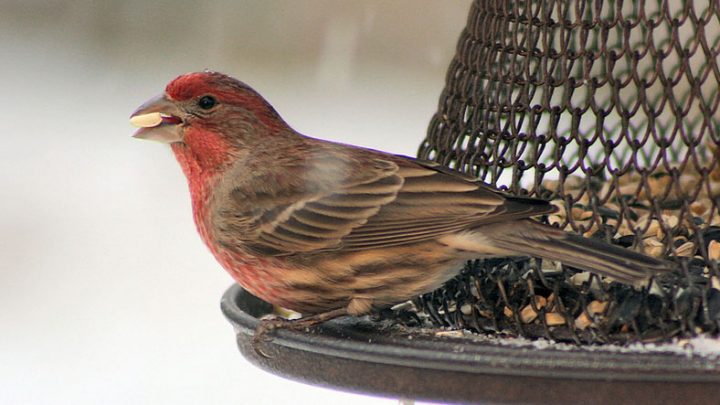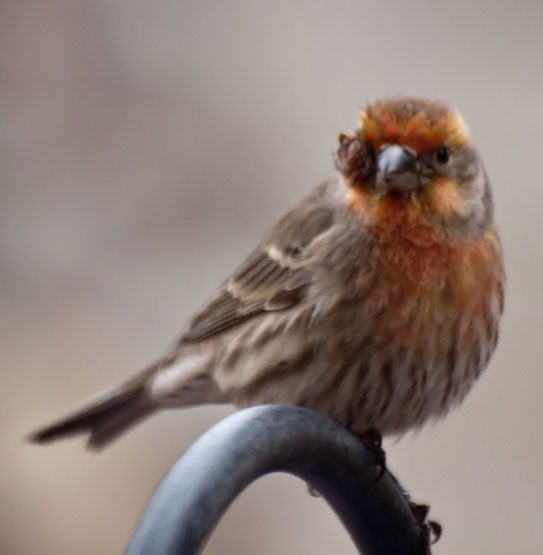Jumping the Species Barrier: Where Do Diseases Come From?
By Andrea Alfano
December 2, 2013
Part of what makes epidemics so frightening is that when they hit, it feels like they’ve come out of nowhere. But “new” diseases had to come from somewhere, and often it’s from another species. (See How a House Finch Disease Reshaped What We Know About Epidemics.)
“Disease emergence is often the result of a pathogen jumping from one host to another,” says Wesley Hochachka, assistant director of Bird Population Studies at the Cornell Lab. In the case of House Finch eye disease, Hochachka and his colleagues recently traced the illness’s 1994 emergence to a single lineage of bacteria previously thought to infect only domestic poultry and their near relatives. The work was published in Proceedings of the Royal Society B.
It’s easy to imagine how a House Finch might get exposed to a disease in poultry—all it would have to do is fly into a coop with some sick chickens. But that still doesn’t fully explain how the disease became so widespread in House Finches.
Pathogens aren’t able to just go around infecting anything they come into contact with. They’re specialized to infect a particular species or group of species. So if a chicken pathogen gets inside of a House Finch, chances are it won’t have the right equipment to survive and reproduce.
By genetically analyzing 107 samples, the researchers could see that multiple strains of M. gallisepticum had made the jump to House Finches, but only one strain had ultimately succeeded in spreading across the continent. Those other strains hung on at low levels for short periods, but never managed to get transmitted widely.
So how did that one strain manage to become so successful? Imagine you live just outside of a luxurious town. You don’t have the money to move there, but you visit from time to time. Then one day you win the lottery, and suddenly you have the means to start a life there.
Essentially, M. gallisepticum won the genetic lottery—some random, “lucky” mutation supplied it with the genetic machinery to become successful in House Finches. Without such a mutation, all that those other strains could afford was to “visit” a few finches here and there.
Researchers still don’t know exactly what prize M. gallisepticum won that allowed it to become so highly virulent in House Finches. But the fact that they found multiple unsuccessful transfers just among the samples they analyzed suggests that making the jump to House Finches was relatively common. M. gallisepticum’s lucky break wasn’t just making the jump, it was acquiring a mutation that allowed it to become virulent in House Finches.
In addition to Hochachka, the authors of this research include André Dhondt and Irby Lovette of the Cornell Lab, Andrew Dobson of Princeton University, Dana Hawley of Virginia Tech, and David Ley of North Carolina State University.

All About Birds
is a free resource
Available for everyone,
funded by donors like you
American Kestrel by Blair Dudeck / Macaulay Library

